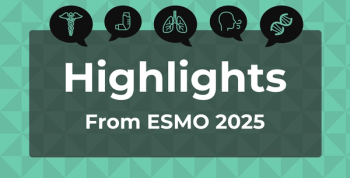
Morbidity, Mortality Improve in HFrEF With Combo Treatment vs Monotherapy
This new analysis of data from the Swedish Heart Failure Registry involved an investigation into the relationship between therapy count and dosing on mortality and morbidity among patients with heart failure with reduced ejection fraction (HFrEF).
Improvements were seen in the risk of cardiovascular (CV) death or hospitalization for
Despite current European Society of Cardiology HF guidance suggesting to begin treatment soon after diagnosis, with not only the therapies mentioned above but also mineralocorticoid receptor antagonists and sodium–glucose cotransporter 2 inhibitors before uptitration, clinical evidence is lacking to back this up, the study authors noted.
“Over the last decades, several landmark randomized clinical trials adopting a strategy aiming for uptitration to TDs if tolerated showed a consistent reduction in morbidity and mortality,” they wrote. “HFrEF drugs are also beneficial independent of one another, and 3 randomized trials suggest that higher doses are more effective than lower doses. Thus, in a large real-world cohort of HFrEF patients, we explored the association between number and dosing of guideline-recommended drugs and mortality/morbidity in patients with HFrEF.”
For the 17,809 patients included in their analysis, there were 4 groups, and these were based on the TD percentage reached for ACEi/ARNi/angiotensin receptor blocker (ARB) and β-blockers: none, less than 50% of the TD, 50% to 99% of the TD, and at least 100% of the TD. The median (IQR) follow-up was 2.06 (0.87-4.65) years.
When comparing the participants who did not have a history of using a RASi or an ARNi with those who did, there was a 17% (HR, 0.83; 95% CI, 0.76-0.91) reduced risk of the primary outcome of time to CV death and HF hospitalization with the <50% TD measure. For those reaching the 50% to 99% TD benchmark, the risk improved even more, to a reduction of 22% (HR, 0.78; 95% CI, 0.71-0.86). This trend continued, with a 27% (HR, 0.73; 95% CI, 0.67-0.80) reduced risk of the primary outcome when participants achieved 100% or more of the TD.
Similar results were seen when comparing outcomes between those who did and did not use β-blockers. For the <50%, 50% to 90%, and 100% or more TD marks, mortality risk reductions of 14% (HR, 0.86; 95% CI, 0.76-0.91), 19% (HR, 0.91; 95% CI, 0.74-0.89), and 26% (HR, 0.74; 95% CI, 0.68-0.82), respectively, were seen.
Overall, combination use of an ACEi, an ARB, or an ARNi plus a β-blocker even when administered at 50% to 99% of the TD was shown to lead to an overall reduced risk for the primary outcome vs results seen with taking just an ACEi/ARB/ARNi or a β-blocker at 100% or more of the TD.
To be included in the study, patients had to have been enrolled in the Swedish Heart Failure Registry (SwedeHF) between May 11, 2000, and December 31, 2018; have HF of 90 days or more; and have with clinician-judged HF through April 2017. HF diagnosis was identified by one of the following International Statistical Classification of Diseases, Tenth Revision codes: I50.0, I50.1, I50.9, I42.0, I42.6, I42.7, I25.5, I11.0, I13.0, or I13.2. Cause-specific mortality was confirmed by the Cause of Death Registry.
The study data also show that fewer patients received ACEi, ARB, or ARNi at 2 of the 3 TD measures vs β-blockers:
- <50% of TD:
- ACEi, ARB, or ARNi: 24%
- β-blocker: 26%
- 50% to 90% of TD:
- ACEi, ARB, or ARNi: 27%
- β-blocker: 34%
- ≥100% of TD:
- ACEi, ARB, or ARNi: 49%
- β-blocker: 40%
The study authors noted that their findings both partially confirm and expand on previous research. They confirm in that the results support current ESC recommendations of starting treatment with lower doses of multiple drugs instead of uptitrating 1 medication and they expand in that they saw lower risks of CV death or hospitalization, a combined outcome and when evaluated separately, and of all-cause mortality from ≥100% of TD vs 50% to 99% of TD vs previous studies only investigating mortality risk as a composite outcome.
Due to the observational nature of their study—which could introduce unmeasured/unknown confounders and selection bias—randomized clinical trials are needed to validate their results. In addition, with most SwedeHF registrants being younger and male, and noted to receive better overall medical care vs the general Swedish HF population, generalizability is limited.
Reference
D’Amario D, Rodolico D, Rosano GMC, et al. Association between dosing and combination use of medications and outcomes in heartfailure with reduced ejection fraction: data from the Swedish Heart Failure Registry. Eur J Heart Fail. Published online March 8, 2022. doi:10.1002/ejhf.2477
Newsletter
Stay ahead of policy, cost, and value—subscribe to AJMC for expert insights at the intersection of clinical care and health economics.







































